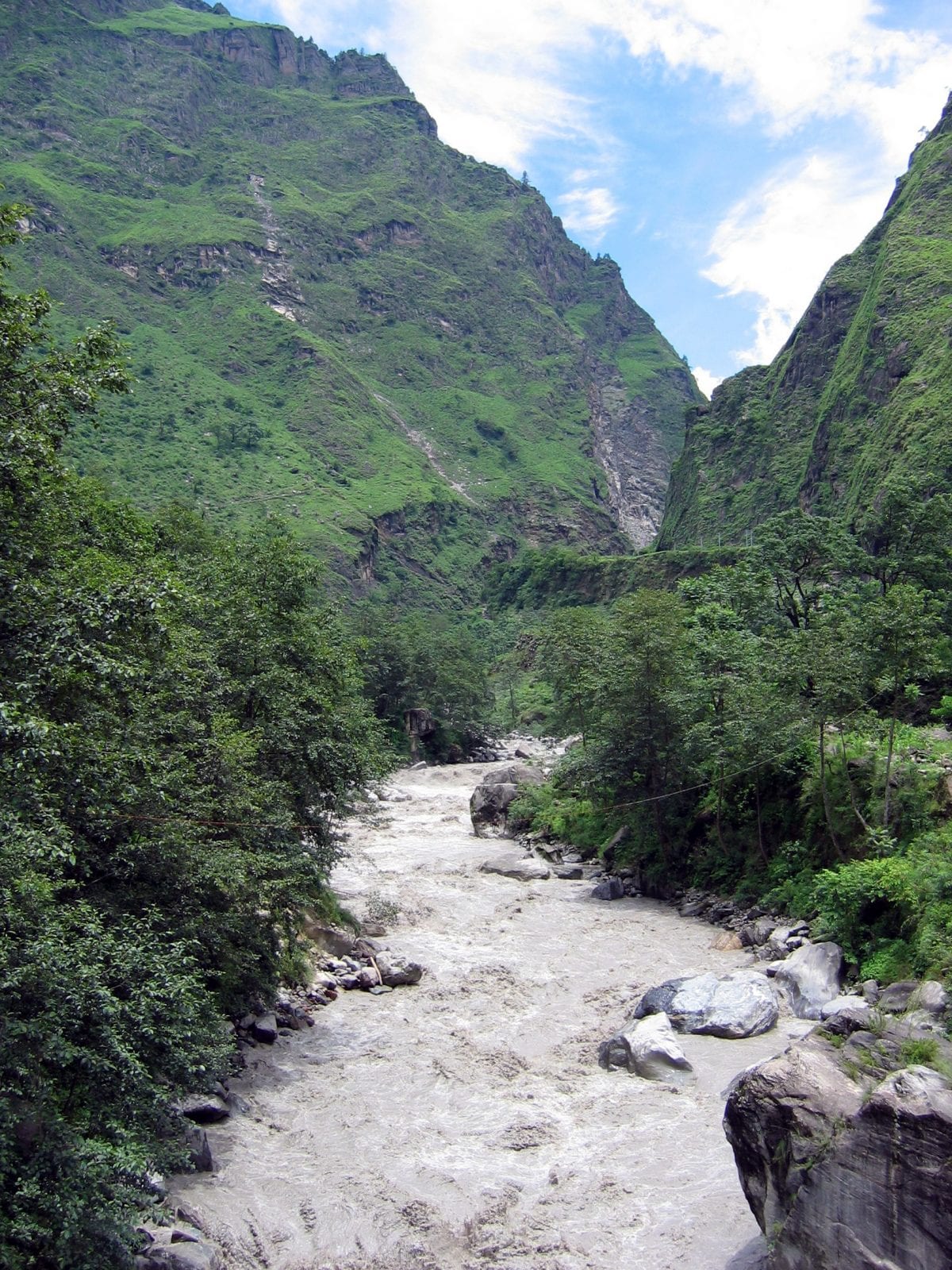Climate Change Can Destabilize the Global Soil Carbon Reservoir, New Study Finds
 A new study from scientists at WHOI and other institutions shows that climate change can destabilize the global soil carbon reservoir. (Narayani River in the Himalayas, a Tributary to the Ganges River. ©Valier Galy/Woods Hole Oceanographic Institution)
A new study from scientists at WHOI and other institutions shows that climate change can destabilize the global soil carbon reservoir. (Narayani River in the Himalayas, a Tributary to the Ganges River. ©Valier Galy/Woods Hole Oceanographic Institution)
March 23, 2021
The vast reservoir of carbon that is stored in soils probably is more sensitive to destabilization from climate change than has previously been assumed, according to a new study by researchers at WHOI and other institutions.
The study found that the biospheric carbon turnover within river basins is vulnerable to future temperature and precipitation perturbations from a changing climate.
Although many earlier, and fairly localized, studies have hinted at soil organic carbon sensitivity to climate change, the new research sampled 36 rivers from around the globe and provides evidence of sensitivity at a global scale.
“The study results indicate that at the large ecosystem scale of river basins, soil carbon is sensitive to climate variability,” said WHOI researcher Timothy Eglinton, co-lead author of the paper in the Proceedings of the National Academy of Sciences of the United States of America. “This means that changing climate, and particularly increasing temperature and an invigorated hydrological cycle, may have a positive feedback in terms of returning carbon to the atmosphere from previously stabilized pools of carbon in soils.”
The public is generally aware that climate change can potentially destabilize and release permafrost carbon into the atmosphere and exacerbate global warming. But the study shows that this is true for the entire soil carbon reservoir, said WHOI researcher Valier Galy, the other co-lead author of the study.
The soil carbon reservoir is a key component in keeping the atmosphere in check in terms of how much carbon dioxide is in the air. The amount of carbon stored in terrestrial vegetation and soils is three times more than how much the atmosphere holds, and it consumes more than a third of the anthropogenic carbon that is emitted to the atmosphere.
To determine the sensitivity of terrestrial carbon to destabilization from climate change, researchers measured the radiocarbon age of some specific organic compounds from the mouths of a diverse set of rivers. Those rivers—including the Amazon, Ganges, Yangtze, Congo, Danube, and Mississippi—account for a large fraction of the global discharge of water, sediments and carbon from rivers to the oceans.
Terrestrial carbon, however, is not so simple to isolate and measure. That’s because carbon in rivers comes from a variety of sources, including rocks, organic contaminants such as domestic sewage or petroleum that differ widely in their age, and vegetation. To determine what’s happening within the rivers’ watersheds, and to measure radiocarbon from the terrestrial biosphere, researchers focused on two groups of compounds: the waxes of plant leaves that serve a protective function for the plants’ leaf surface and lignin, which is the woody “scaffolding” of land plants.
Taking these measurements showed a relationship between the age of the terrestrial carbon in the rivers and the latitude where the rivers reside, researchers found. That latitudinal relationship prompted researchers to infer that climate must be a key control in the age of the carbon that is exported from the terrestrial biosphere to these rivers, and that temperature and precipitation are primary controls on the age of that carbon.
“Why this study is powerful is because this large number of rivers, the wide coverage, and the wide range of catchment properties give a very clear picture of what’s happening at the global scale,” said Galy. “You could imagine that by going after lots of rivers, we would have ended up with a very complicated story. However, as we kept adding new river systems to the study, the story was fairly consistent.”
“In many respects, Earth scientists see rivers as being a source signal that is sent to sedimentary records that we can interpret,” said Eglinton. “By going to sedimentary records, we have the opportunity to look at how the terrestrial biosphere has responded to climate variability in the past. In addition, by monitoring rivers in the present day, we can also use them as sentinels in order to assess how these watersheds may be changing.”
